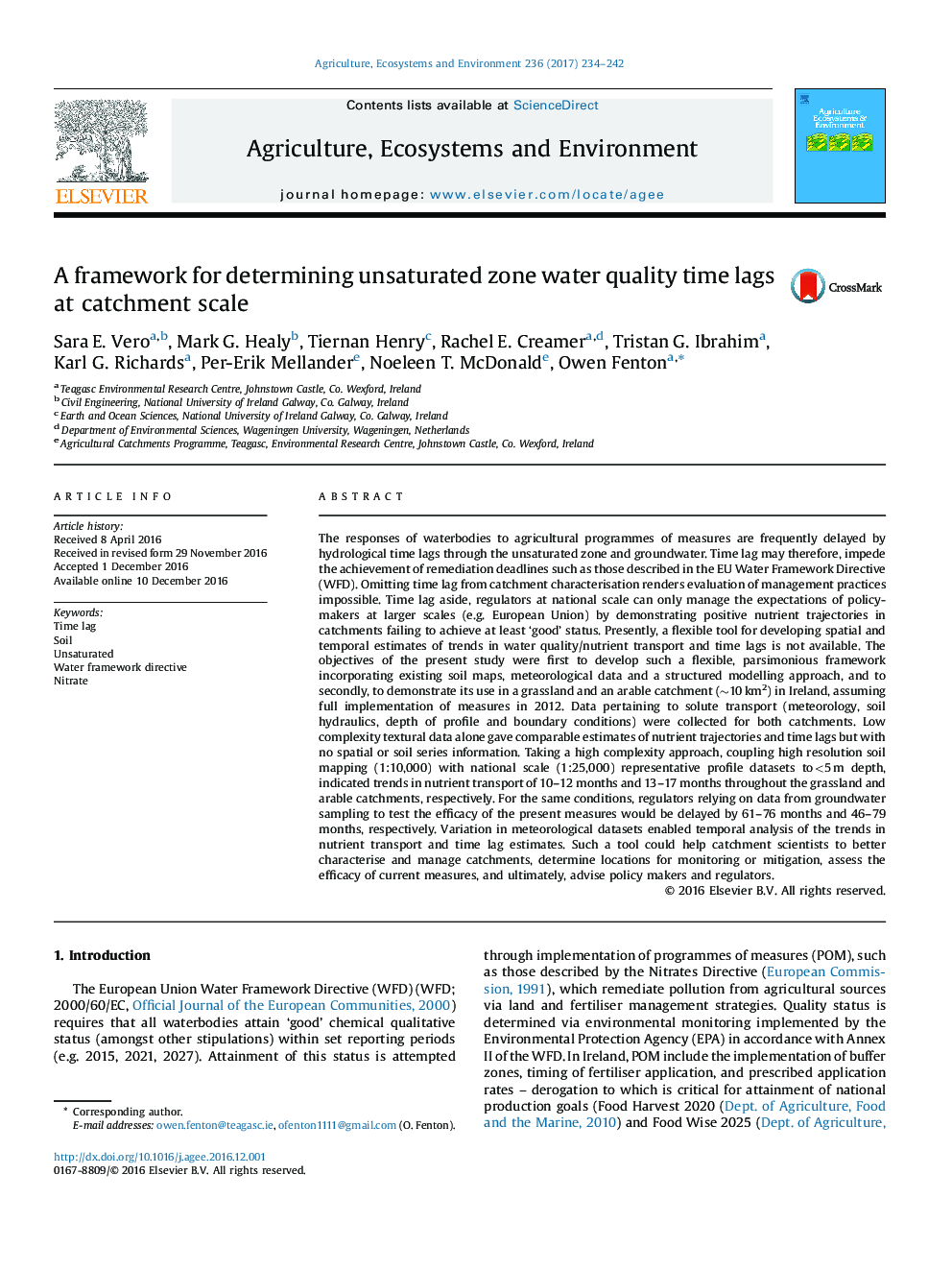| کد مقاله | کد نشریه | سال انتشار | مقاله انگلیسی | نسخه تمام متن |
|---|---|---|---|---|
| 5537892 | 1552016 | 2017 | 9 صفحه PDF | دانلود رایگان |
عنوان انگلیسی مقاله ISI
A framework for determining unsaturated zone water quality time lags at catchment scale
ترجمه فارسی عنوان
یک چارچوب برای تعیین زمان کافی آب در منطقه غلیظ، در مقیاس حوضه یابی، کاهش می یابد
دانلود مقاله + سفارش ترجمه
دانلود مقاله ISI انگلیسی
رایگان برای ایرانیان
کلمات کلیدی
اختلاف زمانی، خاک غیر اشباع، دستورالعمل چارچوب آب، نیترات،
موضوعات مرتبط
علوم زیستی و بیوفناوری
علوم کشاورزی و بیولوژیک
علوم زراعت و اصلاح نباتات
چکیده انگلیسی
The responses of waterbodies to agricultural programmes of measures are frequently delayed by hydrological time lags through the unsaturated zone and groundwater. Time lag may therefore, impede the achievement of remediation deadlines such as those described in the EU Water Framework Directive (WFD). Omitting time lag from catchment characterisation renders evaluation of management practices impossible. Time lag aside, regulators at national scale can only manage the expectations of policy-makers at larger scales (e.g. European Union) by demonstrating positive nutrient trajectories in catchments failing to achieve at least 'good' status. Presently, a flexible tool for developing spatial and temporal estimates of trends in water quality/nutrient transport and time lags is not available. The objectives of the present study were first to develop such a flexible, parsimonious framework incorporating existing soil maps, meteorological data and a structured modelling approach, and to secondly, to demonstrate its use in a grassland and an arable catchment (â¼10Â km2) in Ireland, assuming full implementation of measures in 2012. Data pertaining to solute transport (meteorology, soil hydraulics, depth of profile and boundary conditions) were collected for both catchments. Low complexity textural data alone gave comparable estimates of nutrient trajectories and time lags but with no spatial or soil series information. Taking a high complexity approach, coupling high resolution soil mapping (1:10,000) with national scale (1:25,000) representative profile datasets toâ<5Â m depth, indicated trends in nutrient transport of 10-12 months and 13-17 months throughout the grassland and arable catchments, respectively. For the same conditions, regulators relying on data from groundwater sampling to test the efficacy of the present measures would be delayed by 61-76 months and 46-79 months, respectively. Variation in meteorological datasets enabled temporal analysis of the trends in nutrient transport and time lag estimates. Such a tool could help catchment scientists to better characterise and manage catchments, determine locations for monitoring or mitigation, assess the efficacy of current measures, and ultimately, advise policy makers and regulators.
ناشر
Database: Elsevier - ScienceDirect (ساینس دایرکت)
Journal: Agriculture, Ecosystems & Environment - Volume 236, 2 January 2017, Pages 234-242
Journal: Agriculture, Ecosystems & Environment - Volume 236, 2 January 2017, Pages 234-242
نویسندگان
Sara E. Vero, Mark G. Healy, Tiernan Henry, Rachel E. Creamer, Tristan G. Ibrahim, Karl G. Richards, Per-Erik Mellander, Noeleen T. McDonald, Owen Fenton,
